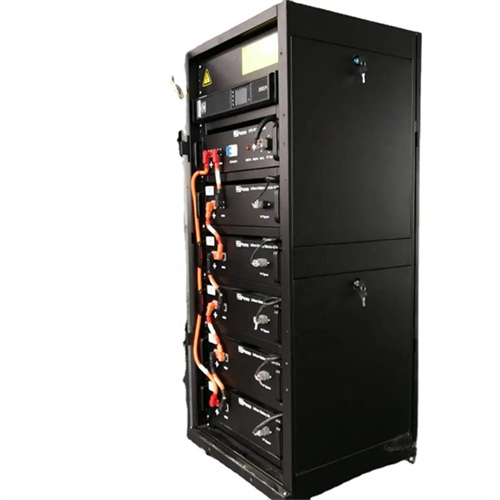The surface of photovoltaic panels is rough

Application of transparent self-cleaning coating for photovoltaic panel
The superhydrophobicity of the lotus leaf is induced by the synergy of rough micro and nano surface structures from a hierarchical array of nano-wax clusters, Solar

Impact of Surface Roughness in Measuring Optoelectronic
solar cells extracted from the same solar panel. To polish one of the samples, we used a 3 kV Ar + beam tha t is irradiated at an angle of 1° parallel to the CdTe surface (Figure 1b). Our milling

Assessment of Photovoltaic Surface Texturing on Transmittance
PV . preparation for the . surface replication. s. Figure 1. Flow diagram for quantifying the PV modules surface texturing. 1) PV module surfaces were cleaned and replicated, 2) replicas

Reducing soiling issues on photovoltaic panels using
In this study, the sol–gel method was used to create rough surface hydrophobic coating to reduce soiling issues on PV panels. A solution was prepared using three different materials including vinyltriethoxysilane

Highly transparent, superhydrophobic, and durable silica/resin self
Liu et al. [9] prepared a rough surface with a pyramidal structure on the silicon substrate by wet etching, and then used magnetron sputtering to grow ZnO nano-wires on the

Study on the cleaning and cooling of solar photovoltaic panels
solar energy sector within the Middle East and North Africa (MENA) region, which is ideal for photovoltaics (PV) installation, could reach $1 However, rough brush cleaning can cause

Micron-Smooth, Robust Hydrophobic Coating for
Photovoltaic (PV) power generation is a clean energy source, and the accumulation of ash on the surface of PV panels can lead to power loss. For polycrystalline PV panels, self-cleaning film is an economical and

A review of transparent superhydrophobic materials and their
Generally, solid particulate matter suspend in the air with a particle size of less than 500 μm is called dust. The dust gather on the surface of the panel mainly comes from two

Superhydrophobic route of fabricating antireflective, self-cleaning
It is reported that surface roughness greater than 100 nm scatters light, suppressing the efficiency of solar panel. 46 A study on superhydrophobic, transparent solar panel coatings using silica

Reducing soiling issues on photovoltaic panels using
Surfaces that simultaneously exhibit hydrophobicity, high contact angle, and high transmission of visible light are of interest for many applications such as optical devices, photovoltaic (PV) panels, and self-cleaning windows.

6 FAQs about [The surface of photovoltaic panels is rough]
Why do PV panels have a high dust density?
The variable dust accumulation at any point on the PV surface results in a different distribution of sunlight entering the PV array, increasing the possibility of a hot spot that damages the PV panels 8. Higher dust density reduces PV short-circuit current, open-circuit voltage, and output power.
What is the roughness of a solar cell coating?
In addition to maintaining low surface energy of materials, the roughness of the coating has to be maintained below 100 nm in order to avoid scattering of light as it directly affects the transparency and yield of the solar cell.
What factors affect soiling of photovoltaic panels?
Soiling of photovoltaic panels is greatly affected by environmental factors (rainfall, humidity, wind, and temperature), photovoltaic module factors (installation, inclination angle, and surface material), and dust factors (particle diameter and type of dust) as represented in Fig. 2.
How to reduce soiling issues on PV panels?
In this study, the sol–gel method was used to create rough surface hydrophobic coating to reduce soiling issues on PV panels. A solution was prepared using three different materials including vinyltriethoxysilane (VTES), tetraethoxysilane (TEOS), and tetrabutoxytitanate (TTBU) called VTT (VTES–TEOS–TTBU) sol as the organic–inorganic hybrid sol.
How does soiling affect PV performance?
3. Shading by soiling on PV performance The term ‘soiling’ is used to describe the accumulation of snow, dirt, dust, leaves, pollen, and bird droppings on PV panels. The performance of a PV module decreases by surface soiling, and the PV power loss increases with an increase in the quantity of soil on the PV module.
How does soil affect the performance of a PV module?
The performance of a PV module decreases by surface soiling, and the PV power loss increases with an increase in the quantity of soil on the PV module. Thus, the accumulation of soil on the PV module can lead to a significant decrease in energy produced by the PV module.
Related Contents
- The role of photovoltaic panels placed on the water surface
- The reason why the surface of photovoltaic panels is charged
- Is it okay to install photovoltaic panels directly on the water surface
- Is the surface of photovoltaic panels resistant to acid and alkali
- Grids on the surface of solar panels
- Is there no brightness on the surface of the photovoltaic panel
- The lines on the photovoltaic panel surface turn yellow
- Contact surface below photovoltaic panel
- Are home rooftop photovoltaic panels expensive
- Free photovoltaic panels on commercial roofs
- China s best photovoltaic panels
- There are several types of column materials for photovoltaic panels